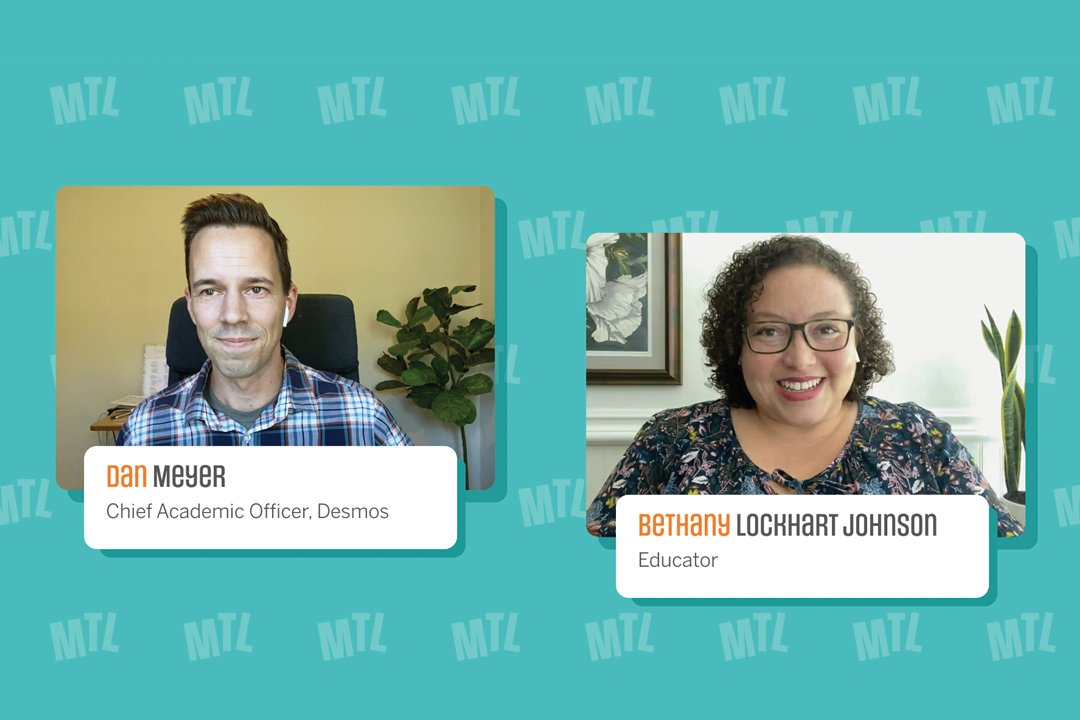
Empowering students to learn together
A social, collaborative math classroom: It sounds like fun, but does it mean that students are just … talking the whole time?
Not at all. The point isn’t to have students socializing the whole time, but rather to have them engaged in and contributing to the larger conversation every step of the way. This kind of instruction makes space for multiple strategies and empowers students to articulate, defend, and revise their thinking.
Situating productive discussions in compelling contexts
What does instruction designed to engage social, collaborative learners look like? But what does problem-based learning mean, and what does it look like?
Teachers:
- Pique students’ interest with a realistic (or wacky!) scenario.
- Ask them to tinker and explore.
- Scaffold as necessary up to a big reveal.
- Provide opportunities for students to talk about what they’re observing and consider potential solutions.
In a math classroom, this approach to learning supports making math accessible for all students.
Building a social, collaborative classroom
When you open the door to a social, collaborative classroom, you’re likely to see and hear students engaged in discussion. And it won’t just be chit-chat—it will be productive discussion, perhaps prompted by a teacher practicing asking questions that support student thinking and understanding. That teacher might even be following the five practices created to do just that.
The book 5 Practices for Orchestrating Productive Classroom Discussions by Peg Smith and Mary Key Stein contains techniques designed to enable social, collaborative instruction. Those practices are:
- Anticipating students’ solutions to a mathematical task.
- Monitoring students’ in-class, real-time work on the task.
- Selecting approaches that students will share.
- Sequencing students’ presentations strategically.
- Connecting students’ approaches and the underlying mathematics.
These five practices are integrated explicitly into the Teacher Edition of Amplify Math. They inform its design overall, guiding teachers in engaging students in math. In fact, applying the five practices doesn’t just help students absorb information—it can help foster a classroom community where interactions are equitable and where students feel they belong.
Check out this Amplify webinar to learn how math educators can use the five practices to fuel positive, resonant classroom interactions. (Presented by Kathleen Sheehy, Director of Professional Development, Amplify; and Sean Nank, Professional Development Design Specialist, Amplify.)
Integrating technology into the math classroom
Incorporating technology in math education also enhances the student experience. When students work only in workbooks, they have to share everything they record.; when they work online, they can draw, type, and drag to outline their thinking—and they can also immediately share their work with others.
It can be challenging to implement engaging, discourse-rich math lessons, but it doesn’t have to be. Digital lessons can be especially powerful in their ability to surface student thinking and spark interesting and productive discussions.
Using technology powered by Desmos, Amplify Math delivers digital lessons that get students thinking, talking, revising, and celebrating their ideas. As students work in the interactive slides, new functionality may appear. They will often be asked to justify their actions and thinking.
Amplify Math is based on Illustrative Mathematics K–12 Math™, an extensively field-tested and highly rated curriculum. The program contains relevant problem-based learning examples and lesson plans, along with lessons based on compelling current and historical narratives. Built on proven teaching strategies, Amplify Math makes productive discourse easier for teachers to facilitate, and more accessible for students.
Amplify Math: How it works
Warm-up (5 minutes)
Each lesson begins with students diving into the math and interacting with each other during a Warm-up task. Every lesson includes an automatic, differentiated Warm-up called a Power-up.
Activities (30 minutes in middle school; 35 minutes in high school)
Students dig into 1–4 tasks and share their observations and reasoning. The teacher uses the strategy of sequencing and selecting to promote more math talk.
Summary and Reflection (5 minutes)
The teacher helps students connect their ideas with the overall mathematical picture of the lesson, unit, and course.
Exit Ticket and Practice (5+ minutes)
The lesson concludes with students completing an embedded, formative Exit Ticket. Additionally, teachers can assign practice problems for students to work on outside of class.
To dive into more professional development for math teachers (all free), stop by Math Teacher Lounge.


